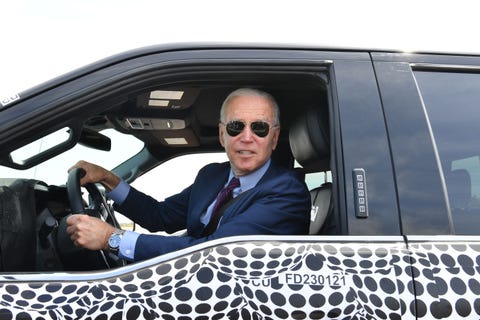
Our test of a 2021 BMW M550i xDrive showed the car fell significantly short of BMW’s claimed zero-to-60-mph time of 3.6 seconds. We alerted BMW to the discrepancy. The company eventually deduced that a software problem was causing a communication error between the car’s stability control system and its engine computer, which caused turbocharger boost pressure to drop. BMW said it will roll out software updates to the owners of all affected cars (2021 M540i xDrive models are also impacted) starting this summer. What has Motor Trend done for you lately?
This Week in Sheetmetal
Toyota made more than its fair share of news this week. It unveiled the Corolla Cross, a small, yes, Corolla-based crossover, the 228-hp rear-wheel-drive manual-transmission GR 86, a TRD Sport version of the 4Runner SUV, and a carbon-fiber-trimmed special-edition Supra.
SSC, the micro-manufacturer responsible for the Tuatara supercar, has updated its track-only car with an Aggressor model that can make up to an insane 2200 horsepower from a twin-turbocharged 5.9-liter V-8 engine.
Ford promises it will unveil its Maverick compact pickup next week, but we already know at least one important thing about it: eagle-eyed viewers of Ford’s Maverick teaser video noted a hybrid badge on the tailgate, so it’ll fit in well with Ford’s increasingly electrified truck family.
Jaguar announced that its F-type sports car will now only be available with a V-8 engine. The car could previously be had with a four-, six-, or eight-cylinder engine. The V-8 will continue to be available in two flavors: a 444-hp base version or supercharged with 575 horsepower in the F-Type R.
Infrastructure Week?
President Biden said on Thursday that he was willing to consider lowering the minimum corporate tax rate to 15 percent if it would convince Republican lawmakers to sign on to a version of his infrastructure funding plan. In Biden’s proposal, he would support lowering the tax rate if Republicans agreed to funding at least $1 trillion in infrastructure spending. The corporate tax rate is now 21 percent, and Biden had previously suggested raising it to 28 percent to fund a roughly $2 trillion infrastructure bill. Corporate tax hikes were supposed to pay for the ambitious plan. Now, the administration is saying that it will focus on tax enforcement rather than tax hikes to close the funding gap.
House Democrats have their own plan to fund at least some infrastructure spending. On Friday, they introduced legislation that would provide $547 million in funding for traditional roads-and-bridges infrastructure projects, as well as funding for passenger rail and other transit systems. That bill will have a hearing next week.
Safety First
The National Highway Traffic Safety Administration (NHTSA) found that traffic deaths in the U.S. increased by 7.2 percent in 2020, to 38,680. That’s even though the pandemic and its many side effects meant that Americans drove 13 percent fewer miles than in 2019—and even though new cars have more safety and crash-mitigation technology than ever before. NHTSA says the jump in fatalities is due to an increase in risky behaviors like impaired driving, speeding, and not wearing seatbelts. The data is still preliminary but currently points to the worst year for traffic deaths in the U.S. since 2007.
And there was some hubbub last week about Tesla’s decision to rely only on cameras (as opposed to cameras and radar) in its Autopilot self-driving suite. After Tesla announced the change, NHTSA removed labels saying the Model 3 and Model Y came with certain safety features, and the Insurance Institute for Highway Safety (IIHS) removed the 3 from its list of Top Safety Pick+ cars. Those changes weren’t because the new camera-based system is necessarily unsafe, but because neither NHTSA nor IIHS (nor anyone else) has yet tested the new cars to determine whether the camera-based system still performs forward-collision warning and automated emergency braking functions. So don’t panic, but do beware: In announcing the change, Tesla said some cars will be sold with limited Autopilot functionality as software catches up to the equipment change. Those cars will eventually receive over-the-air updates to restore the full function.
Further Reading
Automakers aren’t the only companies being pushed towards a greener future: Shell Oil was ordered by a Dutch court to reduce its emissions by 45 percent before 2030 to remain in compliance with the Paris Climate Accords (a ruling the company says it will appeal). And there are three new members of ExxonMobil’s board determined to push the oil giant to confront climate change.
The Wall Street Journal‘s daily podcast examined the concept of electric pickups, and American Public Media’s Marketplace explained the summer rental-car shortage.
The New York Times has a meditation on Mazda’s quiet sales successes during the pandemic year.
This content is created and maintained by a third party, and imported onto this page to help users provide their email addresses. You may be able to find more information about this and similar content at piano.io
Source link






